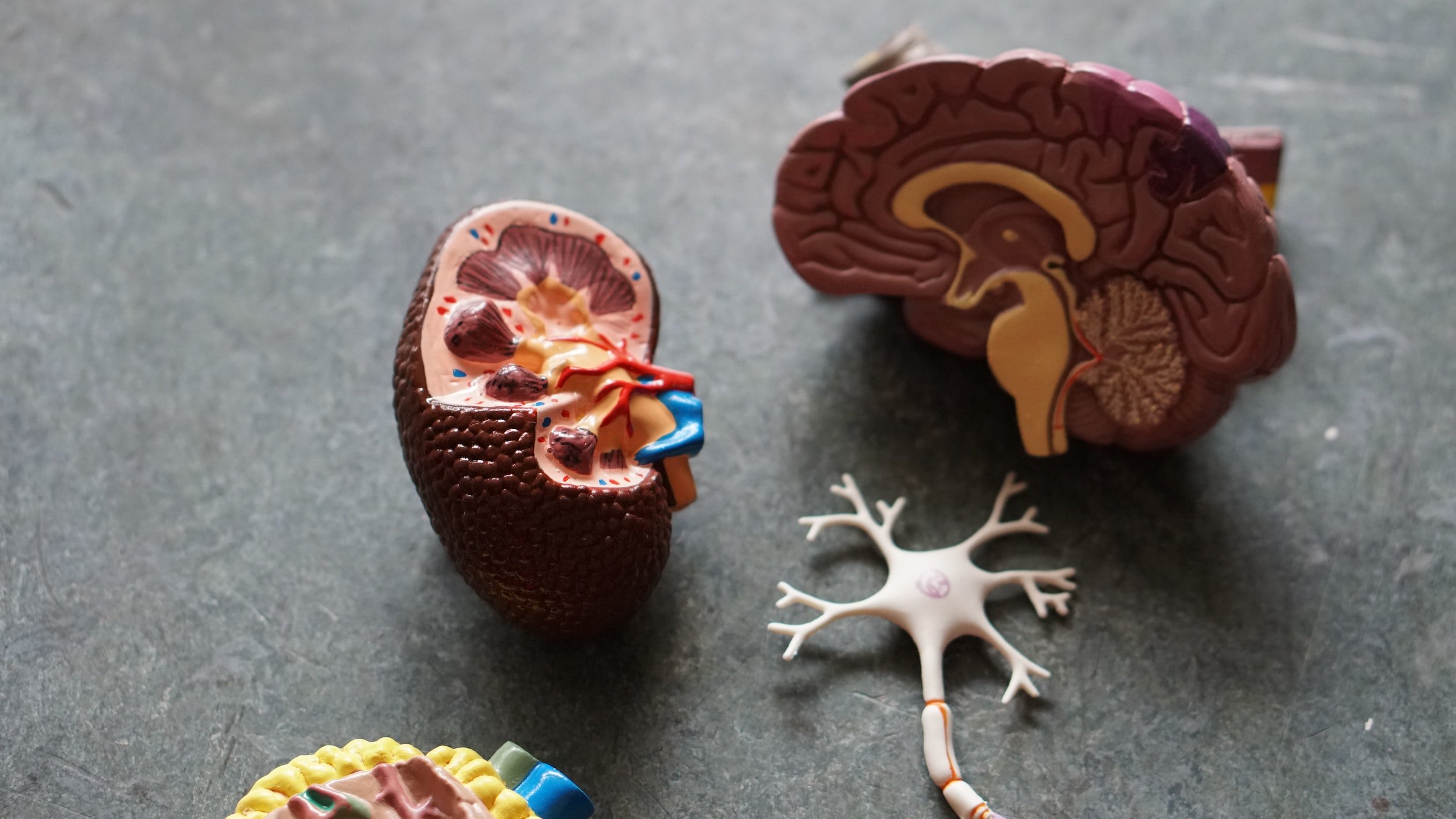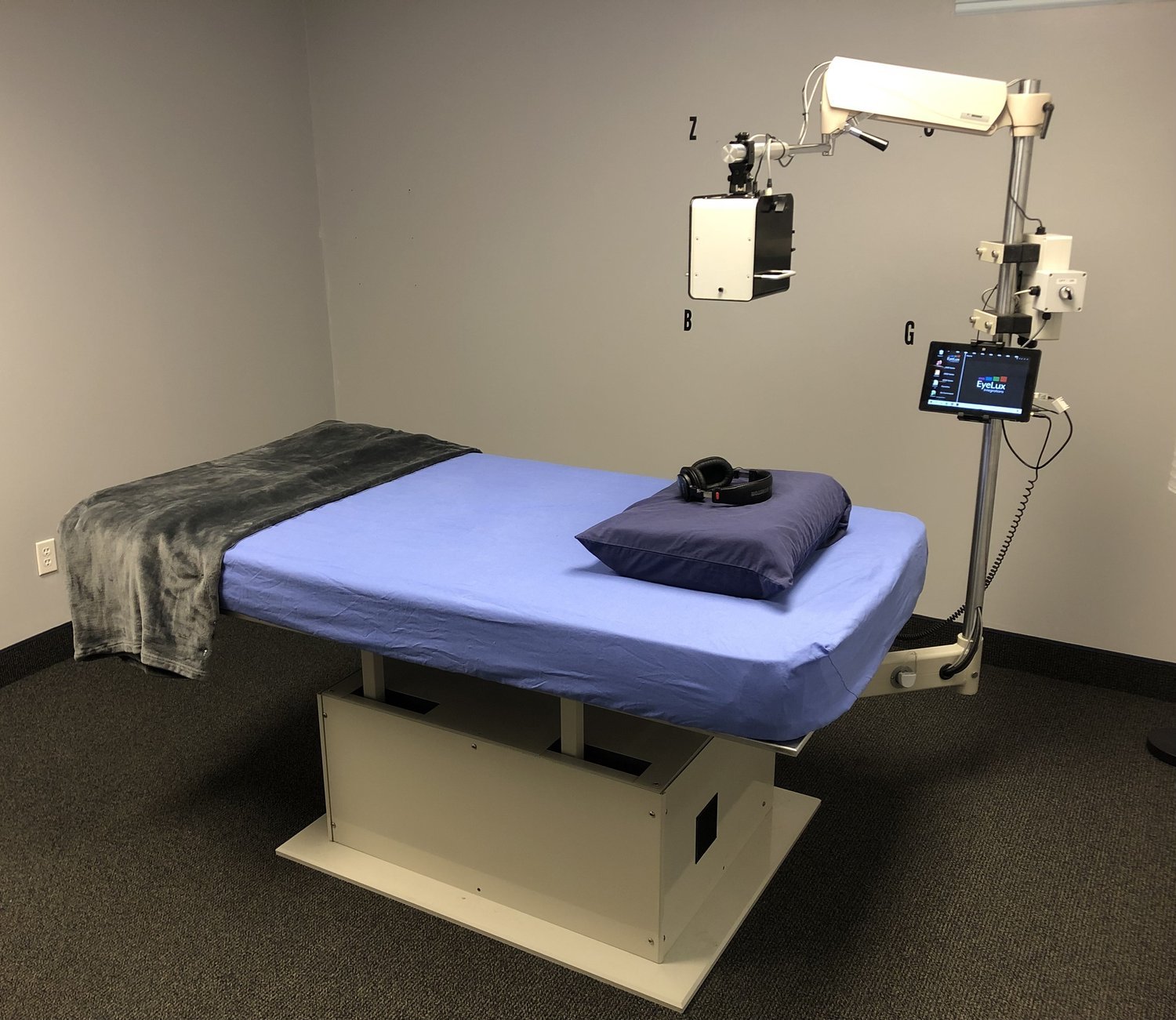
What is Multi-Sensory Training (MST)?
Multi-Sensory Training (MST) is a proven clinical intervention that helps the brain learn or relearn multi-sensory processing…the brains first phase of all learning. All subsequent learning is built upon multi-sensory processing being on “autopilot”. MST, in part, accomplishes this via direct action on the individual’s autonomic nervous system.
MST provides the foundation for higher level (cortical) interventions. These include classroom instruction, vision therapy, speech therapy, cognitive therapy, mental health counseling, occupational therapy, tutoring, sports training, and any other top-down/cortical-based approaches that presume a solid base of sensory processing exists in the individual’s brain.
Using the EyeLux Integrations multi-sensory table system, MST involves simultaneous application of specific wavelength ranges of natural light, vestibular stimulation (motion), auditory training, and somatosensory input. It is NOT a stand-alone intervention, but rather a powerful adjunct to the overall care of those suffering sensory processing dysfunctions often associated with concussion, general learning difficulties, ADHD, anxiety, PTSD, autism, sleep disturbances, emotional dysregulation, long-haul COVID, sports performance, and more.
MST also has been shown to enhance sport performance by improving the communication of peripheral vision with motor skills. MST enhances reactive motor instincts.

What is multi-sensory processing?
Multisensory processing describes the ability of an intact, well-developed brain to receive information from multiple sensory pathways and modulate these inputs for optimal identification of and reactivity to environmental events. This is a biological example of the whole being greater than the sum of its parts. This ability of the brain has significantly contributed to our survival. It’s why we can do most of everyday navigation in our environment securely and efficiently without thinking about it. When a brain struggles with multi-sensory processing, we have to be “deliberate” versus being “automatic” in activities of daily living.
What is the Neural Mechanism of Multi-Sensory Processing?
Multi-sensory processing occurs when a receptor cell receives energy from a relevant peripheral source (retina from photon, chochlea from phonon, semicircular canal cilia from gravity) and is subsequently transferred into an electrical effect onto the membranes of a central neuron. This neuron thereby receives multiple sensory electrical effects producing events on the postsynaptic membrane affecting the neuron’s spiking activity in the form of multisensory processing. This activity involving populations of multisensory neurons leads to perceptual and/or behavioral outcomes. This multisensory processing phenomenon needs to be fully operational to allow successful cortical processing and subsequent executive function.

How is MST done?
The MST process involves 12 days in the clinic over a compressed period of time (12-16 days), approximately one hour per day. This is followed by 18 days of home based therapy. Beyond this, some participants benefit from in-office booster sessions determined individually.
Warning: Due to its subcortical focus, MST may cause some participants to experience temporary neuro-retracing during the process. A retracing is the re-experiencing of past symptoms and dysfunctions. This is thought to represent the body revisiting how it healed incompletely/wrongly during the original recovery proccess. These typically only last minutes to hours. Occasionally, retracings last longer. Re-tracings may include, without limitation: pain, discomfort, imbalance, behavioral changes, and the re-occurrence of past thoughts, memories, feelings or emotions (including suicidal ideation). The good news: since retracings are a sign of a new opportunity to heal the original injuries, they indicate benefits from MST are about to take place.

What does MST help?
MST is successful at facilitating a child’s self-development of multi-sensory processing which is often delayed in autism, ADHD, behavioral, general learning difficulties, and more).
MST helps traumatic brain injury (TBI) patients regain efficiency in their multi-sensory pathways after having been compromised as a result of the head injury. Our research on the use of MST with post concussion syndrome patients is convincing!
MST is often an excellent wellness tool for those suffering from anxiety, PTSD, car sickness, adult ADHD, emotional regulation, sleep difficulties, and more.
MST also has been shown to enhance sport performance by improving the communication of peripheral vision with motor skills. MST enhances reactive motor instincts.
Concussion Rehabilitation
Concussion can cause disruption of the neuro-pathways that provide multi-sensory processing. Many of the persistent symptoms associated with mTBI are a result of this disruption.
MST helps the concussed patient relearn the subconscious skill of multi-sensory processing via a repetitive, non-cognitive, safe, and controlled protocol. This results in improvement in dizziness, light sensitivity, brain fog, fatigue, motion sickness, mental focus, emotional stability, and more.
Developmental & Learning Delays
Developmental and learning delays are often a result of a child not having optimal multi-sensory integration and processing skills. MST helps a child learn the subconscious skill of multi-sensory modulation.
MST has also been shown to be very effective clinically in assisting children (non concussion based) overcome delays in sensory processing disorders often associated with ADHD, anxiety, or autistic based delays. MST is designed to help these children be more calm and confident in their environment (both new and familiar) and therefore more fully engage in life activities. This includes school, home, social encounters, tutoring, and more.
MST Facilitates Other Interventions
MST can accelerate the progress for many of today’s common interventions.
These include:
optometric vision therapy
occupational therapy,
speech therapy,
psychological therapy,
sensory integration therapy,
reading intervention,
canine or other animal performance



